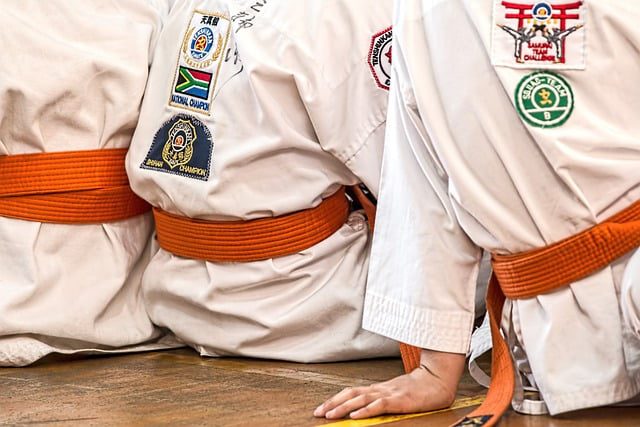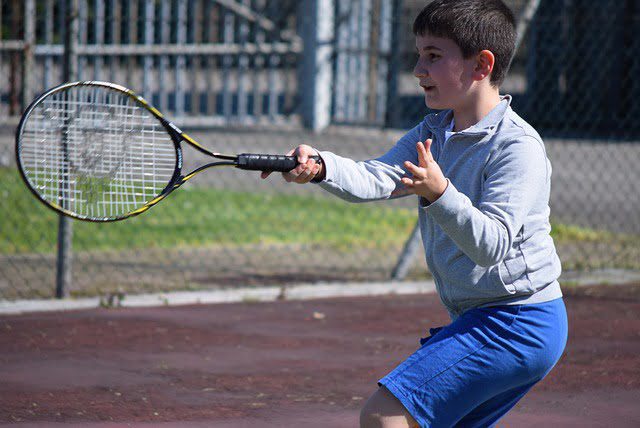Weight loss sports for children are a great way to help kids shed excess pounds & improve their overall health and wellbeing. In today’s society, childhood obesity has become a prevalent issue, with many children struggling to maintain a healthy weight. Engaging in sports not only provides a fun & enjoyable way for children to exercise, however it also promotes the development of various important skills like teamwork, discipline & perseverance. By participating in weight loss sports, children can embark on a journey towards a healthier lifestyle, build self confidence & establish lifelong habits that will benefit them well into adulthood. In this article, we will explore some of the most effective weight loss sports for children and highlight their numerous physical, mental and emotional benefits.
Benefits of Weight Loss Sports for Children.
There are numerous benefits of weight loss sports for children, which extend far beyond just shedding extra pounds. Engaging in weight loss sports not only promotes physical fitness but also enhances overall wellbeing, self esteem & social skills. Here are some key advantages of weight loss sports for children:(1)
1. Improve Physical Health.
Weight loss sports involve various physical activities that help children to develop strength, endurance, flexibility and coordination.
Regular participation in these sports can lead to weight reduction, decreased body fat percentage & improved cardiovascular health. Additionally, it helps to prevent obesity related health issues such as diabetes, high blood pressure & heart diseases.
2. Boost Self Esteem.
As children accomplish their weight loss goals through sports, they experience a sense of achievement and pride. The progress they make, whether it’s running faster, jumping higher or becoming more agile, boosts their self confidence and self worth.
This newfound confidence can positively impact other aspects of their lives as well, like academic performance and social interactions.
3. Enhanced Mental Wellbeing.
Weight loss sports not only benefit the physical aspects of a child but also contribute to their mental wellbeing. Regular exercise releases endorphins, which are natural mood boosters, reduce stress, anxiety & depression.
Engaging in sports also helps children to develop discipline, perseverance & resilience, teaching them to cope with challenges and setbacks in a healthy manner.
4. Lifelong Healthy Habits.
Weight loss sports provide an opportunity for children to learn healthy habits that they can carry into adulthood. By participating in these activities, they develop a routine of regular exercise & gain knowledge about proper nutrition. This sets a foundation for a long term healthy lifestyle, reduce the risk of weight related issues in the future.
5. Social Interaction & Teamwork.
Weight loss sports often involve team based activities or group workouts, providing opportunities for children to socialize and develop interpersonal skills.
Through these sports, children learn to cooperate, communicate & collaborate with their peers, fostering teamwork and building lasting friendships. This social aspect of weight loss sports promotes a sense of belonging and camaraderie among children, enhancing their overall social development.
| 💡 Tips Verywel Fit.com Weight loss sports offer numerous benefits for children beyond just weight reduction. From physical health improvements to increased self esteem, mental wellbeing and social skills, engaging in these sports can positively impact a child’s overall development. Encouraging children to participate in weight loss sports not only promotes a healthy lifestyle but also instills essential life skills that they can carry into adulthood. |
10 Best Weight Loss Sports for Children.
Here, we present a comprehensive list of effective weight loss sports for children that provide numerous health benefits while ensuring they have fun and stay motivated.
1. Swimming.

A low impact sport that engages the entire body, swimming is an excellent choice for children seeking weight loss. It helps them to burn calories, build endurance and strengthen muscles, all while having a great time splashing around in the water.
2. Soccer.

This team sport not only enhances cardiovascular fitness but also improves coordination, agility and teamwork. The constant running involved in soccer helps children to shed excess weight and develop a strong foundation of physical fitness.
3. Cycling.

Cycling is an enjoyable & effective way for children to lose weight while exploring the outdoors. Riding a bike helps to build leg muscles, improves stamina & enhances balance and coordination. Additionally, it can be a great family activity that promotes bonding & healthy habits.
4. Martial Arts.

Martial arts, like karate or taekwondo, are not only a fantastic way for children to learn self defense but also an excellent means of weight loss.
These disciplines focus on discipline, self control & full body movements, resulting in increased strength, flexibility & improve overall fitness.
5. Dance.

Engaging in various dance styles like ballet, hip hop or jazz, can be a fun way for children to shed pounds while expressing themselves creatively. Dance classes help to improve cardiovascular health, flexibility & coordination while boosting self confidence and self esteem.
6. Basketball.

Playing basketball is an intense & dynamic physical activity that aids in weight loss and improves overall fitness levels. It involves running, jumping & quick movements, which enhance cardiovascular endurance, strengthen muscles and improve hand eye coordination.
7. Gymnastics.

Gymnastics combines strength, flexibility & balance, making it a challenging yet rewarding sport for weight loss. Children participating in gymnastics classes or programs can improve their body awareness, core strength & overall muscular endurance, leading to effective weight management.
8. Tennis.

This sport not only provides a full body workout but also enhances hand eye coordination & concentration. Playing tennis helps children to shed pounds, build strong muscles & improve their agility and balance, all while developing their social skills through friendly competition.
9. Running.

Simple yet highly effective, running or jogging is an accessible sport that can be enjoyed by children of all ages. Regular running sessions help to burn calories, strengthen the cardiovascular system & improve overall endurance, contributing to weight loss and better physical health.
10. Yoga.

While not a traditional sport, yoga offers immense benefits for children seeking weight loss. This mindful practice helps to improve flexibility, posture & balance while promoting relaxation and reducing stress. Combining yoga with other physical activities can lead to a more holistic approach to weight loss.
| 💡 Tips Verywel Fit.com Introducing children to effective weight loss sports not only helps to combat obesity but also instills healthy habits, boosts self-esteem, and promotes overall physical and mental well-being. By engaging in these activities, children can develop a lifelong passion for staying active, setting them on a path to a healthier and happier lifestyle. |
Frequently Asked Questions.
Children should engage in weight loss sports for at least 60 minutes every day or most days of the week. It is important to find a balance between physical activity and rest to prevent overexertion or injuries.
It is essential for children participating in weight loss sports to consume a balanced diet that includes fruits, vegetables, whole grains, lean proteins, and healthy fats. It is important to consult with a healthcare professional or nutritionist for personalized dietary advice.
Safety is paramount when children participate in weight loss sports. It is crucial to ensure proper supervision, appropriate protective gear, warm-up and cool-down routines, hydration, and gradual progression in intensity and duration of physical activity.
Children with pre-existing health conditions should consult with their healthcare provider before engaging in weight loss sports. The healthcare provider can provide guidance on suitable activities and any necessary precautions.
Parents can support their children in weight loss sports by providing encouragement, being positive role models, creating a supportive and active home environment, and involving the whole family in physical activities.
It is essential to promote a positive body image and self-esteem in children participating in weight loss sports. Focusing on the enjoyment of physical activity, rather than solely on weight loss, can help prevent negative impacts on body image and self-esteem.
Many weight loss sports can be adapted to suit children of various ages. It is important to consider the child’s developmental stage, physical capabilities, and interests when selecting a weight loss sport.
Absolutely! Weight loss sports can be a fun and enjoyable way for children to stay active and achieve their weight loss goals. Finding activities that the child enjoys and involving them in the decision-making process can help make it a positive experience.
Bottom Line.
Weight loss sports can be an effective & enjoyable way for children to achieve their weight loss goals. Engaging in sports not only promotes physical activity but also helps children to develop important skills such as teamwork, discipline & perseverance. However, it is crucial to ensure that children participate in sports that are age appropriate & safe for their overall wellbeing. Additionally, weight loss should always be approached in a healthy & balanced manner, with the guidance of healthcare professionals and parents. By combining a healthy diet with regular exercise through weight loss sports, children can develop lifelong habits that promote a healthy weight & overall wellness.
+1 Source
Verywelfit has strict sourcing guidelines and relies on peer-reviewed studies, educational research institutes, and medical organizations. We avoid using tertiary references. You can learn more about how we ensure our content is accurate and up-to-date by reading our editorial policy.
- Do youth sports prevent pediatric obesity? A systematic review and commentary; https://www.ncbi.nlm.nih.gov/pmc/articles/PMC4444042/
How we reviewed this article:
Our team of experts is always monitoring the health and wellness field, ensuring that our articles are updated promptly as new information emerges. See Our Editorial Process
May 13, 2025
Written By: Uttam
Reviewed By: David Rosales
Written By: Uttam
Reviewed By: David Rosales

 Workout
Workout
 Meditation
Meditation





 Contact Us
Contact Us














